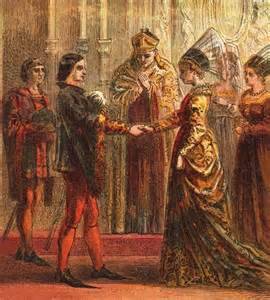06 May Weddings~ Medieval to Now: How have they changed
The medieval period (the 4th to 15th century) brought about lasting changes in the way marriages were arranged and perceived. Several rituals that rose in popularity in the Middle Ages are still in practice today– reciting vows, exchanging rings, and hosting a celebration are customs that have not changed very much from the medieval era. Though marriages were typically arranged, and the style of dress varied depending on the social class of the bride and groom. Today, brides choose from casual to elegant, from dresses to celebrating.
Ceremony
To announce a wedding, a notice was placed on the front door of the church. This was done to notify everyone of the upcoming ceremony and allow time for any grievances to be aired and disputed. The ceremony usually began outside of the church with the bride and groom standing beside each other and facing the front door. A priest or bishop would usually officiate the ceremony. The bride had to stand to the left of the groom (due to the belief that Eve was created out of Adam’s left rib). The priest would ask the group if anyone had a reason to oppose the marriage. They would exchange vows, and the rings were placed on the fourth finger.
After the ceremony, a feast with friends and family would take place. The couple would drink wine and listen to love songs and poems performed by minstrels. The type of wedding cake that is popular today-that is, a sweetened cake decorated with icing-was not present during medieval weddings. Instead, the couple celebrated with an unsweetened wheat-based bread, the same kind that would be present at any other common gathering. There has been only one recording of a special wedding ritual involving food, and it required guests to stack buns as high as possible in front of the newlyweds. It was thought to bring prosperity if the bride and groom were able to kiss over the stack.
Dress
Instead of a white gown, medieval brides usually wore dresses in deep jewel tones. Blue was a common choice because it symbolized purity. For wealthier ladies, gowns were made of expensive, luxurious fabrics like velvet, silk, and satin, and rich hues of red and gold were popular. Lower-class brides would copy the style of noblewomen as much as possible, but their dresses were created out of inexpensive fabrics such as cotton and linen.
The garter was another tradition originating in the medieval period. The bride’s clothing was associated with good luck, and wedding guests would chase her at the end of the celebration in an attempt to grab a scrap of lucky cloth to keep for themselves. Traditionally, men who presented their lady with a bride’s garter were said to have a faithful marriage.






No Comments